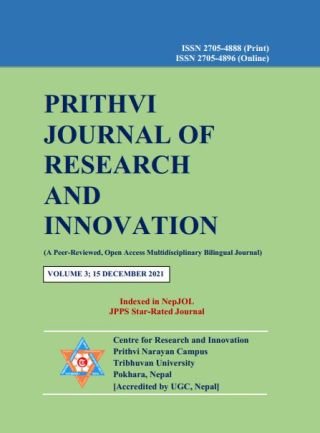The Status and Threats of Birds: A Case Study of Birds in Nayapul to Ghandruk Area, Kaski, Nepal
DOI:
https://doi.org/10.3126/pjri.v3i1.41629Keywords:
Habitat, endangered species, muscicapidae, passeriformes, pollution, pesticidesAbstract
The purpose of this study is to quantify species diversity of birds in the study area and to explore the biotic and abiotic factors affecting the bird population. This study was carried out by using the fixed point counting method. The study area was situated in Annapurna Rural Municipality of Kaski district. A total of 147 bird species belonging to 46 families and 14 orders were identified in the study area. It was found that Muscicapidae was the largest family and Passeriformes the largest order. Among the reported species, 50% were residents, 31% were full-migrants, 18% were altitudinal migrants and the remaining were 1% nomadic. Habitats of birds included the forest 68%, the scrubland 17 %, the grassland 7% and the wetland 6 % of the study area. Similarly, the rocky area and artificial area covered 1% of the total species. The results showed that most of the bird species i.e. 136 were least concerned, 4 of them were nearly threatened, 3 of them were endangered, 3 were critically endangered and only one species was vulnerable. The most important threats included hunting and trapping, killing for fun, shift in crop production, use of insecticides and pesticides, improved storage devices, habitat destruction, developmental activities, tourism, buried carcasses and predatory.
Downloads
Downloads
Published
How to Cite
Issue
Section
License
Copyright (c) 2021 Centre for Research and Innovation (CRI), Prithvi Narayan Campus (TU)

This work is licensed under a Creative Commons Attribution-NonCommercial 4.0 International License.
© Centre for Research and Innovation (CRI), Prithvi Narayan Campus (TU)

